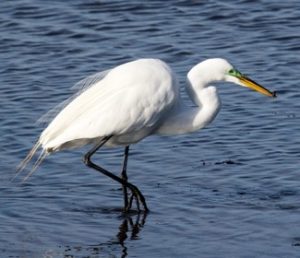Crevalle Jack
Caranx hippos

Image by Robert Aguilar, Smithsonian Environmental Research Center on Flickr, CC BY 2.0
Physical: The crevalle jack comes in a range of colors, from a blue-green to green-gold back, a silver or yellowish belly, and yellow fins. Juveniles will have several dark vertical stripes along the body. They have a black spot on gill cover and on the base of the pectoral (side) fin, which distinguishes them from other jack species. They also have bony scutes along the lateral line, near the base of the tail. Adults grow to 24 in (70 cm) on average. They often make a croaking noise when caught by fishermen.
Habitat: Range from Nova Scotia to the northern Gulf of Mexico and further south to Uruguay. Also found in the western Mediterranean and parts of Africa. In the US, they’re more common to the south and especially the Gulf of Mexico, so most crevalle jack in the Barnegat Bay are juvenile southern strays that have made their way north. They live from the coastline out to the continental shelf, including upstream currents, reefs, and offshore areas.
Feeding: Crevalle jacks are predatory fish that hunt in schools. Adults eat fishes, shrimp, and other marine invertebrates. Juveniles feed on smaller fish and crustaceans.
Breeding: Spawning season lasts from March to September. Females lay eggs offshore, and larvae will move inland to estuaries.

Sign up for email or connect through social media.